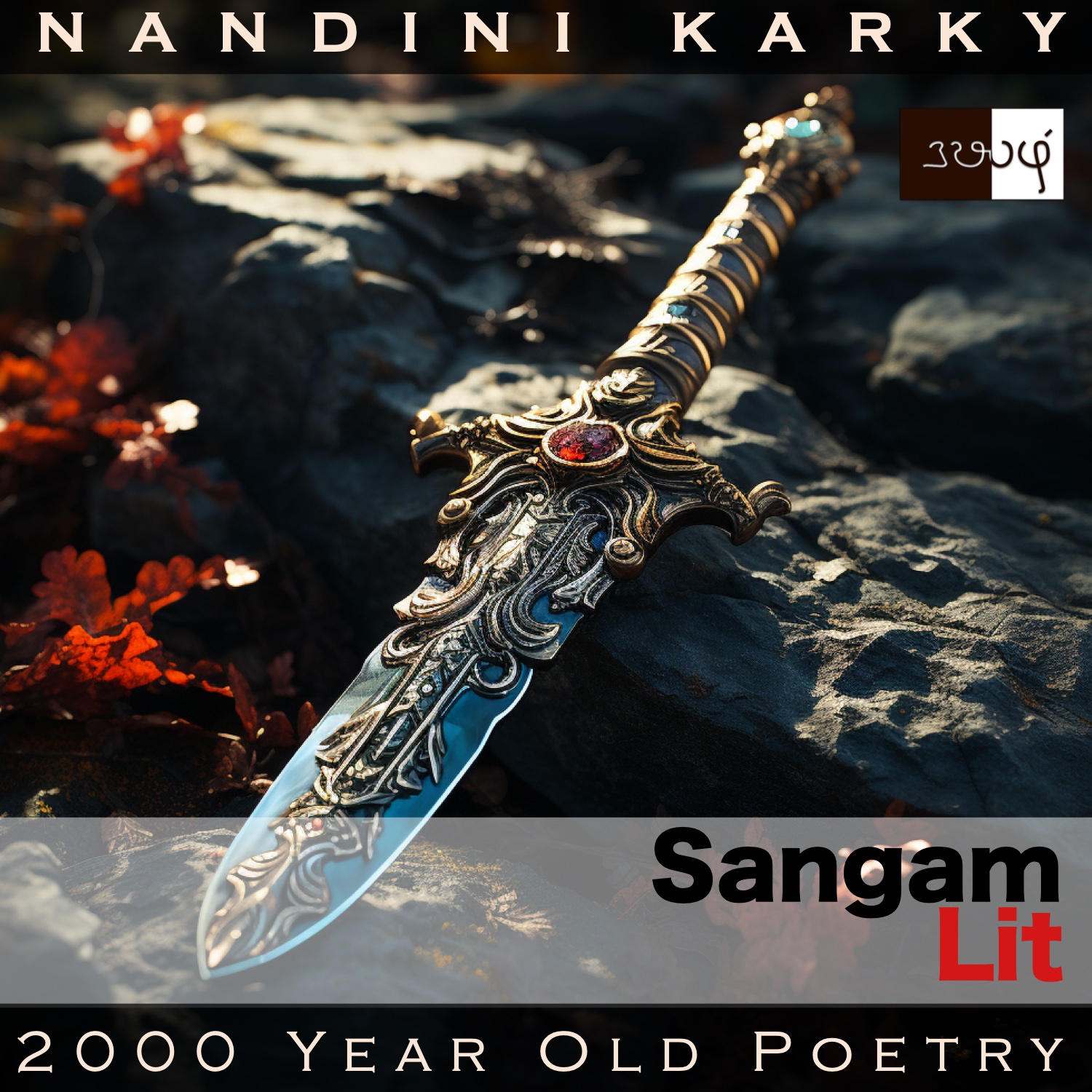Podcast: Play in new window | Download
Subscribe: Apple Podcasts | Spotify | Amazon Music | Android | iHeartRadio | Email | TuneIn | RSS | More
In this episode, we listen to an account of activities before a battle, as portrayed in Sangam Literary work, Puranaanooru 269, penned by the poet Avvaiyaar. The verse in situated in the category of ‘Vetchi Thinai’ or ‘Cattle capturing’ and reveals the successful exploits of a leader.

குயில் வாய் அன்ன கூர்முகை அதிரல்
பயிலாது அல்கிய பல் காழ் மாலை
மை இரும் பித்தை பொலியச் சூட்டி,
புத்தகல் கொண்ட புலிக் கண் வெப்பர்
ஒன்று இரு முறை இருந்து உண்ட பின்றை,
உவலைக் கண்ணித் துடியன் வந்தென,
பிழி மகிழ் வல்சி வேண்ட, மற்று இது
கொள்ளாய் என்ப, கள்ளின் வாழ்த்தி;
கரந்தை நீடிய அறிந்து மாறு செருவில்
பல் ஆன் இன நிரை தழீஇய வில்லோர்,
கொடுஞ் சிறைக் குரூஉப் பருந்து ஆர்ப்ப,
தடிந்து மாறு பெயர்த்தது, இக் கருங் கை வாளே.
If you notice carefully, we have skipped two numbers from our last Puranaanooru verse because these two poems have never been recovered and are lost to the ravages of time. Wonder what thoughts these missing verses would have contained! We continue our journey by exploring this verse penned by that prolific female poet of Sangam times – Avvaiyaar. The poet’s words can be translated as follows:
“Akin to a koel’s beak are the sharp buds of the ‘jewel vine’, and wearing on your thick, black tresses, a garland of these flowers that have not matured into fruits with many seeds, after drinking once or twice the thick liquor in the hue of a tiger’s eyes, poured fresh into a new cup, hearing the beats of the ‘thudi’ drummer who wears a twig and leaf garland, even when insisted upon to drink the well-filtered delicacy, refusing the same and blessing the toddy, you left! Knowing that many bowmen, those who owned a huge herd would want to rescue their cattle in the second battle, even as vultures with curved wings screeched aloud in the skies above, you vanquished them with this sword in your dark hand!”
Let’s explore the words herein. The poet starts in her characteristic style of comparing elements in nature such as a koel’s beak and a bud of the ‘athiral’ flower, commonly known as ‘jewel vine’. That visual imagery is only to say that these flowers are worn by this leader on his thick, black hair. Then that leader is seen drinking deeply from a new cup of liquor, the colour of which, the poet compares to a tiger’s eyes. From that striking simile, the poet pulls us back to their present by talking about how just then, the thudi drums calling the leader to battle were heard. Immediately, he rose, refusing to drink anymore toddy as a man bent on his mission, and set out to capture cattle from the enemies, knowing fully well that many would come to defend it with their sturdy bows. In a rousing battle, where vultures roved the skies, this leader won over his foes and returned successfully, all accomplished by the power of the sword in his dark hand, the poet concludes.
Yet again, there is this difficult-to-accept glorification of stealing, war and bloodshed. Those were the times and that was their priorities and the path forward is to let go of these outdated notions and just focus on the beauty of their poetry which connects a koel bird to a jewel vine flower and makes us relish a glass of toddy in the hue of a tiger’s eyes. We can extend a silent wish that our descendants in the future will likewise be as generous to our own unknown flaws of thought today!




Share your thoughts...